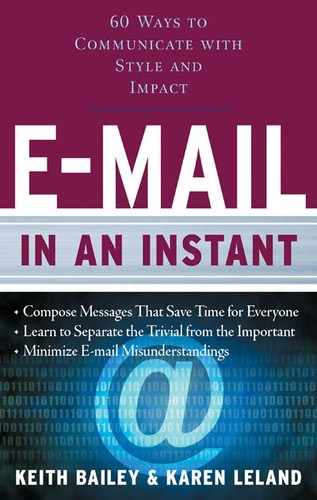15
Start With a Salutation
Most people give a greeting at the drop of a hat. For instance, they say hello when answering the phone; they offer a nice to meet you when being introduced to someone new, and start a letter with Dear. Why, then, do so many people launch into their e-mail messages without even an acknowledgment of the other person’s name? Remember, your e-mail’s salutation in a small way helps to set the tone for the message to come.
Obviously, e-mails sent to family and friends can be more casual than those sent to customers, coworkers, and vendors. Salutations to close pals might include such classics as Yo!, Howdy, and What’s up?
Business associates, however, usually require a more formal greeting. Consciously crafting a salutation is a mental reminder that you are speaking to another person rather than just typing words on a screen—something that’s easy to forget in today’s fast-paced world.
The most usual salutation is Dear, followed by the recipient’s first or last name, depending on your relationship. Some e-mail correspondents forgo the Dear altogether and just write the recipient’s name followed by a colon. This is a less formal approach, and should be reserved for people with whom you have a well-established relationship.
When responding to e-mails you receive from people you don’t know well, look for the following clues to tell you how you should refer to them when writing back.
• If the person signs off with his or her full name (Carol Carmichael), be on the safe side and reply Dear Ms. Carmichael.
• If a woman does not denote her marital status (Carol Carmichael), then go with Ms.
• If the person signs off with his or her first name (Carol), you can feel free to respond in kind with Dear Carol.
• If the person signs off with a title (Dr. Carol Carmichael), always use the title in your response, as in Dear Dr. Carmichael.
Once you’ve sorted out the greeting, the few words after the salutation provide the equivalent of the Nice to meet you exchange that is the customary opener to any usual face-to-face and telephone conversation. Useful e-mail opening lines include:
• Thank you for your note, e-mail, message, and so on.
• I hope this e-mail is finding you well.
• I trust you had a pleasant weekend, holiday, vacation, or the like.
• Good day/morning/afternoon/evening.
• I was referred to you by [fill in the blank].
• Please allow me to introduce myself.
